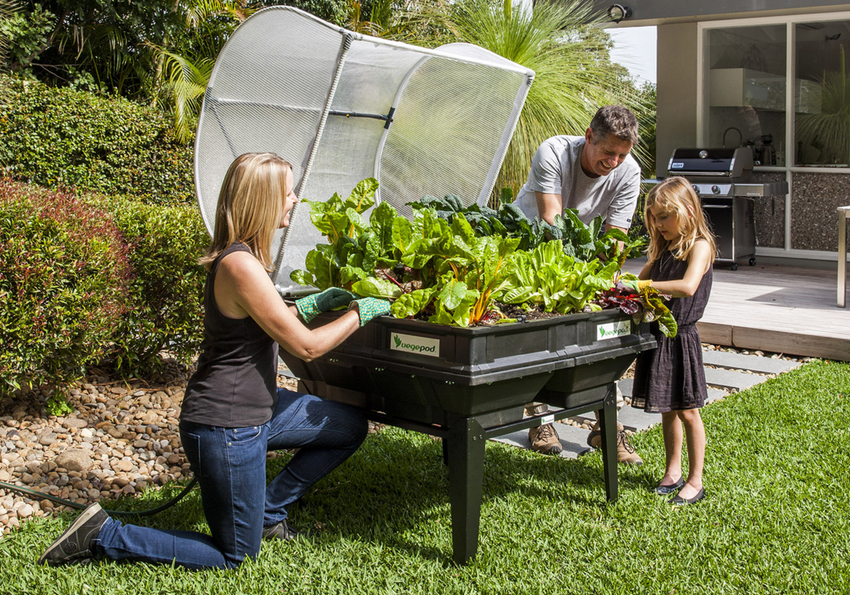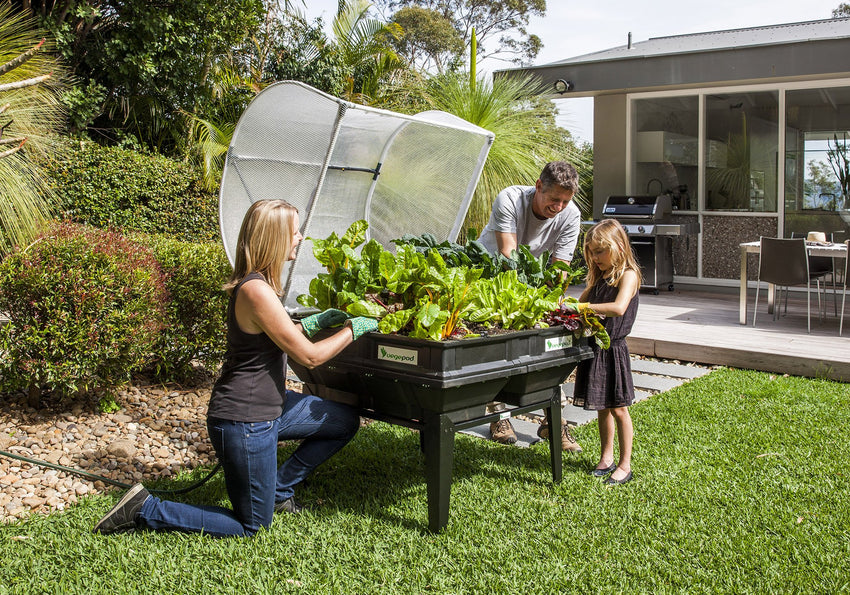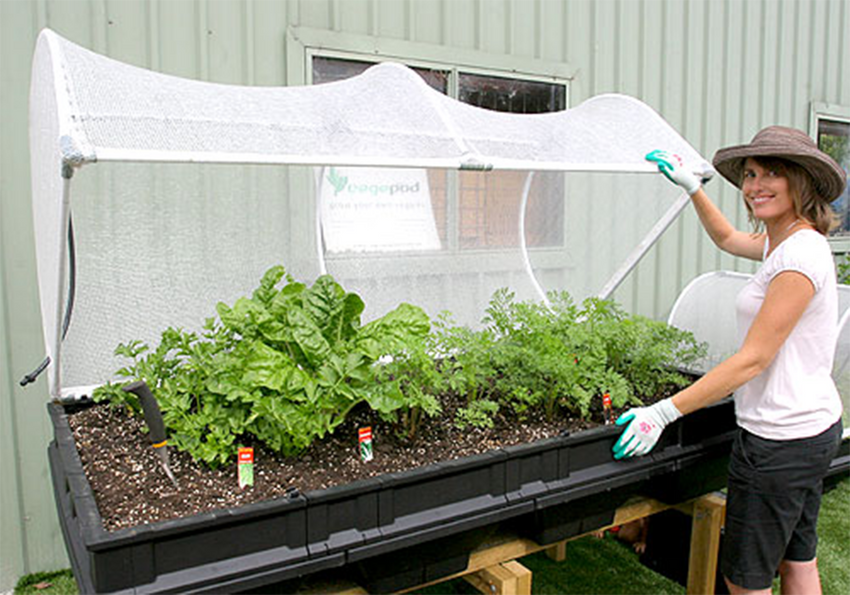Vegepod Raised Garden Beds: The Easiest Way To Grow Your Own Food
Title: Vegepod Raised Garden Beds: The Easiest Way to Grow Your Own Food
Introduction:
Do you want to grow your own food, but don't have a lot of time or experience? If so, a Vegepod raised garden bed might be the perfect solution for you. Vegepods are self-watering, container gardens that are easy to set up and maintain. They also come with a protective cover that helps to extend the growing season and protect your plants from pests and the elements.
In this blog post, we will take a closer look at Vegepods and discuss all of the benefits they offer. We will also provide some tips on how to get started with your own Vegepod garden.
Main Content:
What is a Vegepod?
A Vegepod is a self-watering, container garden that is made from recycled plastic. It is designed to be easy to set up and maintain, even for people with limited gardening experience. The Vegepod comes with a built-in irrigation system that ensures that your plants are always properly watered. The system works by wicking water from a reservoir at the bottom of the bed up to the roots of the plants. This means that you only need to water your Vegepod every few weeks, even during hot, dry weather.
The Benefits of Vegepods
There are many benefits to using a Vegepod raised garden bed. Here are just a few:
- Easy to set up and maintain: As mentioned above, Vegepods are very easy to set up and maintain. Even if you have never gardened before, you should be able to get your Vegepod up and running in no time.
- Self-watering: The built-in irrigation system means that you only need to water your Vegepod every few weeks. This is a huge time saver, especially during the hot summer months.
- Increased yields: Vegepods have been shown to produce higher yields than traditional raised garden beds. This is because the wicking system ensures that the plants' roots are always properly watered.
- Extended growing season: The protective cover helps to extend the growing season in both the spring and fall. This means that you can enjoy fresh, homegrown vegetables for longer.
- Pest and disease resistant: The protective cover also helps to protect your plants from pests and diseases. This can save you a lot of time and hassle in the long run.
Tips for Getting Started with a Vegepod
Here are a few tips to help you get started with your own Vegepod garden:
- Choose a location that gets at least 6 hours of sunlight per day.
- Fill the Vegepod with a high-quality potting mix.
- Plant your seeds or seedlings according to the instructions on the package.
- Water your Vegepod regularly, but don't overwater it.
- Fertilize your plants every few weeks.
- Enjoy your fresh, homegrown vegetables!
Conclusion:
Vegepods are a great way to grow your own food, even if you don't have a lot of time or experience. They are easy to set up and maintain, and they offer a number of benefits, such as increased yields, extended growing season, and pest and disease resistance. If you are looking for an easy way to start gardening, a Vegepod is a great option.
Are you looking for a way to start your own vegetable garden? If so, you should consider a Vegepod raised garden bed. Vegepods are easy to set up and maintain, and they provide the perfect growing environment for vegetables.
Vegepods are made from recycled plastic, so they are environmentally friendly. They are also lightweight and portable, so you can move them around your yard as needed.
If you are interested in learning more about Vegepods, please visit Home Gardening.
FAQ of vegepod raised garden beds
- What are the benefits of using a Vegepod raised garden bed?
There are many benefits to using a Vegepod raised garden bed. First, the raised bed design makes it easier to garden, especially for people with limited mobility. Second, the Vegepod's unique soil mix is designed to retain moisture and nutrients, which can help plants grow healthier and more productive. Third, the Vegepod's built-in irrigation system makes watering a breeze. Finally, the Vegepod's design helps to deter pests and diseases, which can save you time and money.
- How much sun does a Vegepod need?
Vegepods need at least 6 hours of direct sunlight per day. If you live in an area with less sunlight, you may need to supplement with artificial light.
- What plants can I grow in a Vegepod?
You can grow a wide variety of vegetables, herbs, and flowers in a Vegepod. Some popular choices include tomatoes, cucumbers, peppers, lettuce, carrots, herbs, and strawberries.
- How do I care for a Vegepod?
Caring for a Vegepod is relatively easy. You will need to water your plants regularly, fertilize them once a month, and control pests and diseases. You may also need to add compost to the soil every few years.
- What are some common problems with Vegepods?
Some common problems with Vegepods include gnats, slugs, and mold. You can prevent these problems by following the care instructions carefully.
- Is a Vegepod worth the investment?
Whether or not a Vegepod is worth the investment depends on your individual needs and budget. If you are looking for an easy way to grow healthy, productive plants, then a Vegepod may be a good option for you. However, if you are on a tight budget, there are other raised garden bed options available that may be a better fit.
Image of vegepod raised garden beds
10 different images of vegepod raised garden beds that are free to use:
Image 1: A Vegepod raised garden bed with a greenhouse cover. The cover is made of a durable, translucent material that allows light to reach the plants while protecting them from pests and harsh weather.

Image 2: A Vegepod raised garden bed with a built-in misting system. The misting system helps to keep the plants hydrated and prevents them from drying out.

Image 3: A Vegepod raised garden bed with a wicking bed system. The wicking bed system allows the plants to draw water from a reservoir below the bed, which helps to reduce the amount of watering that is required.

Image 4: A Vegepod raised garden bed with a variety of vegetables growing in it. The vegetables include tomatoes, cucumbers, peppers, and lettuce.

Image 5: A Vegepod raised garden bed with a child sitting inside it. The child is watering the plants and enjoying the fresh air.
Image 6: A Vegepod raised garden bed in a backyard. The bed is surrounded by flowers and other plants.

Image 7: A Vegepod raised garden bed on a patio. The bed is filled with herbs and other edible plants.

Image 8: A Vegepod raised garden bed in a greenhouse. The bed is filled with plants that need a warm, humid environment.

Image 9: A Vegepod raised garden bed in a school garden. The bed is used by students to learn about gardening and nutrition.

Image 10: A Vegepod raised garden bed in a community garden. The bed is used by community members to grow their own food.

Post a Comment for "Vegepod Raised Garden Beds: The Easiest Way To Grow Your Own Food"